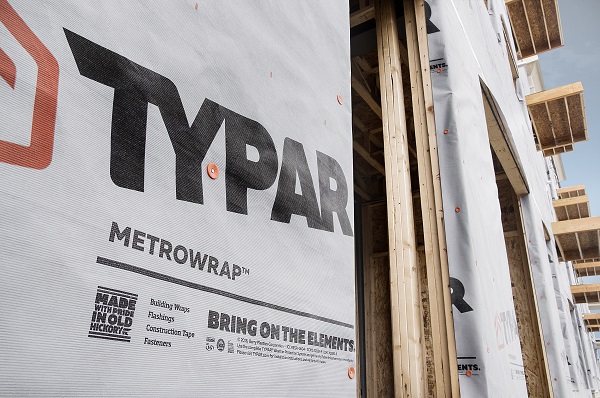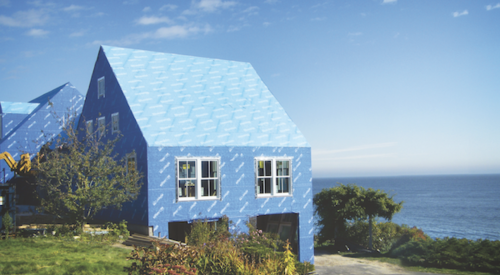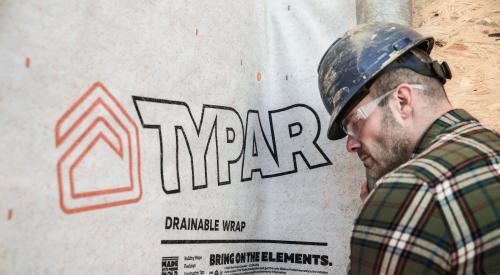Hammering fasteners by hand becomes a tedious task when installing housewrap, plus it leaves holes in the housewrap and compromises its ability to perform as a weather resistant barrier. Most builders and contractors can agree that having a piece of housewrap peel off shortly after application is at the very least a hassle that requires added time and labor to re-apply, and at worst possible litigation and legal ramifications.
The benefits of cap fasteners
Simply put, the use of caps seals holes made by the penetration of the fasteners. Studies show that homes where cap nails and cap staples were used to attach housewrap resisted air infiltration and water holdout better than those where caps weren’t used. If water is allowed to enter through the staple holes, it becomes trapped creating the perfect conditions for rot and mold. The more holes, the better the chance for complications and negative long-term affects on the building envelope.
Purchasing tools that are specifically designed to attach housewrap is worth the investment due to the time and labor saved. National Nail Corporation’s STINGER® Cap Systems offer contractors pneumatic and non-pneumatic tools that automatically drive nails or staples through a small, circular 1-inch plastic cap that seal the holes created by the fastener. Because of the concave shape of the cap, tension is put on the structure when penetrated by the fastener to create the perfect seal.
Working with a cap stapler requires less staples – applying every 32 inches rather than every four to six inches. This dramatically reduces the number of staples needed in a project along with reducing the amount of labor required. Not to mention capped staples have a holding power 20x greater than non-capped staples.
Aside from the labor saved and the reduced aggravation, the ultimate benefit of the cap staple and cap nail systems are building performance. Users of cap staple and cap nail systems experience no water leakage through the underlayment or housewrap due to fastener holes, and the underlayment and housewrap is allowed to perform as intended. Moreover, almost all homes are now subject to new, stringent energy codes, and controlling air infiltration is a major focus of these codes. Air infiltration robs insulation R-value in a process called “wind washing”. But one surefire way to maintain the manufacturer’s predicted R-value – and help bring buildings into compliance with whole-house rating systems like ENERGY STAR – is to properly apply housewraps, making sure to seal the seams and eliminate holes created by traditional fasteners. The result is a house with a much higher chance of complying with air infiltration requirements, offering tight tolerances that achieve the toughest high-performance standards.
For more pro tips on housewrap selection and installation, visit typar.com.











